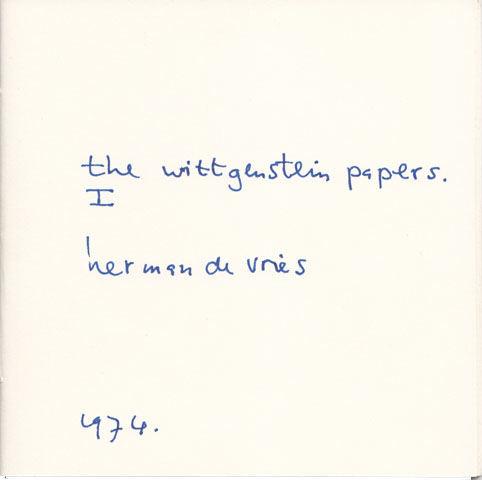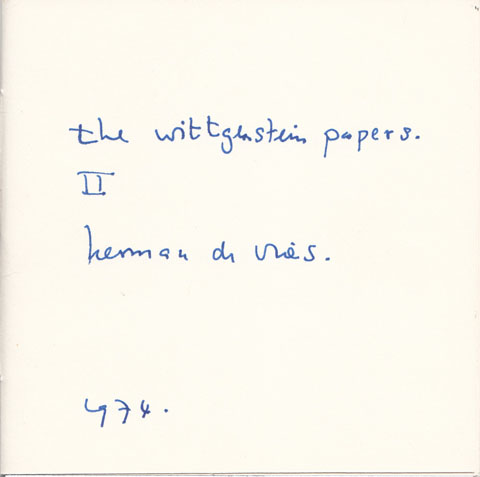[38] the wittgenstein papers I & II appeared in 1974. it consists of two square booklets with an identical number of pages. in the first, five propositions from tractatus, famous as well as dogmatic, are turned into questions, from "does the world divide into facts?" which echoes proposition 1.2: "The world divides into facts" to "what is the case?" echoing proposition 1: "the world is all that is the case". the questions, handwritten in red ink, only one per page, are followed by a page of text, also handwritten, in blue ink, and borrowed from the last lines of wittgenstein's preface to tractatus, in which the philosopher evaluates the contribution of his book. after having declared that he considers the truth of his propositions to be definitive and that he believes "to have found, on all essential points, the final solution of the problems", he then corrects this apparent assurance by adding that "the second thing in which the value of this work consists is that it shows how little is achieved when these problems are solved". as he wrote a little earlier in the text that it is "the aim of the book is to draw a limit to thought, or rather - not to thought, but to the expression of thoughts", its main result thus amounts to underlining the limits of language. this is confirmed by the last two propositions of tractatus, in which wittgenstein recommends transcending the propositions of his book in order to "see the world aright", before he concludes: "what we cannot speak about we must past over in silence".
[39] this silence is evoked by the second booklet of the wittgenstein paper: its is totally blank. it also suggests, following wittgenstein, that the domain of silence is wider than that in which may reign the clarity of language. [...]
source: Anne Moeglin-Delcroix, 'beyond language', in herman de vries. les livres & les publications (Cdla : Saint-Yrieix-la-Perche 2005) 38-39.


